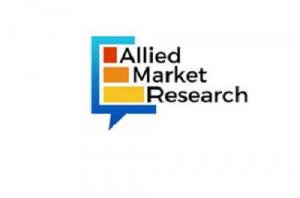Fuel Cell Bikes Market to Hit USD 24.7 Billion by 2040, CAGR 15.2%
Fuel-cell bikes deliver long range, fast refueling and near-zero tailpipe emissions — ideal for fleets and long-distance riders.
WILMINGTON, DE, UNITED STATES, September 3, 2025 /EINPresswire.com/ -- According to a new report published by Allied Market Research, titled, “Fuel Cell Bikes Market by Frame Material (Aluminium, Steel, Carbon Fiber, Others), by Max Load (Less Than 100kg, 101kg - 125kg, More Than 125kg), by Power (Less Than 250 W, 250 W to 400 W, 401 W to 750 W, Above 751 W), by Max Speed (Less Than 50km/h, More Than 50km/h), by Range (Less Than 100km, 101km - 125km, More Than 125km), by Sales Channel (Online, Offline Stores): Global Opportunity Analysis and Industry Forecast, 2030-2040" The global fuel cell bikes market was valued at USD 6.0 billion in 2030, and is projected to reach USD 24.7 billion by 2040, growing at a CAGR of 15.2% from 2030 to 2040.Fuel cell bikes — electric bicycles powered by onboard hydrogen fuel cells instead of, or alongside, lithium-ion batteries — promise longer ranges, faster refuelling and lower lifecycle emissions, positioning them as a niche but fast-developing alternative to battery-only e-bikes for delivery fleets, commuters and regional mobility services. (Market projections and traction are beginning to appear as firms and cities test pilot programs.)
𝗗𝗼𝘄𝗻𝗹𝗼𝗮𝗱 𝗣𝗗𝗙 𝗕𝗿𝗼𝗰𝗵𝘂𝗿𝗲: https://www.alliedmarketresearch.com/request-sample/A10059
𝗠𝗮𝗿𝗸𝗲𝘁 𝗗𝘆𝗻𝗮𝗺𝗶𝗰𝘀
• Technology & performance - Fuel cell stacks paired with small hydrogen tanks act as onboard generators, delivering higher energy density than comparably sized batteries; this enables extended ranges and lighter repeated-use duty cycles, which is especially attractive for commercial fleets and delivery services that value uptime.
• Refuelling & infrastructure constraints - The main impediment to mass adoption is hydrogen refuelling availability: without convenient, affordable refuelling points the practical advantage of fast refills is muted, limiting early deployments to controlled fleets or regions with nascent hydrogen networks.
• Cost & scale economics - Current fuel cell systems, hydrogen storage components and low-volume manufacturing keep purchase prices and total-cost-of-ownership higher than battery e-bikes; costs are expected to fall as fuel-cell miniaturization, hydrogen supply chains, and manufacturing scale improve. (Subsidies and fleet procurement can accelerate adoption.)
• Use-case pull - Delivery companies, postal services, micromobility operators and tourism/rental operators are high-probability early adopters because fuel cell bikes reduce downtime from charging and extend daily kilometers per vehicle - a commercial value proposition that can outweigh higher capex in fleet calculations.
• Regulatory & policy levers - Government incentives for hydrogen infrastructure, clean mobility subsidies and low-emission zones will strongly influence deployment speed; where policymakers pair support for hydrogen stations with fleet procurement programs, market growth will accelerate. Recent industry initiatives and partnerships targeting hydrogen technology show growing strategic interest.
𝗦𝗻𝗮𝗴 𝗗𝗶𝘀𝗰𝗼𝘂𝗻𝘁: https://www.alliedmarketresearch.com/checkout-final/A10059
𝗦𝗲𝗴𝗺𝗲𝗻𝘁 𝗢𝘃𝗲𝗿𝘃𝗶𝗲𝘄
Segmentation centers on propulsion type (pure fuel-cell, hybrid fuel-cell + battery, and fuel-cell range-extended e-bikes), end users (personal/retail, commercial fleets, government/micromobility schemes) and distribution channels (OEM direct, fleet procurement, dealers). Commercial fleet and hybrid configurations — which combine battery buffering with a smaller fuel cell — are currently the most practical near-term growth segments due to range, redundancy and fleet operational needs.
𝗥𝗲𝗴𝗶𝗼𝗻𝗮𝗹 𝗔𝗻𝗮𝗹𝘆𝘀𝗶𝘀
•Asia-Pacific leads early adoption potential: heavy industrial investment in hydrogen and strong public-sector support across parts of China, Japan and South Korea create attractive conditions for pilot projects and localized manufacturing, making APAC the most active region for fuel-cell bike pilots and infrastructure investment.
Europe and North America show clustered growth: Europe’s strong decarbonization targets, urban low-emission policies and UK/EU hydrogen strategies create pilot opportunities, while pockets of hydrogen infrastructure and fleet trials in North America (notably California) enable targeted rollouts; however, broad consumer adoption in these regions remains contingent on wider refuelling networks and cost declines.
𝗙𝗼𝗿 𝗣𝘂𝗿𝗰𝗵𝗮𝘀𝗲 𝗜𝗻𝗾𝘂𝗶𝗿𝘆:
https://www.alliedmarketresearch.com/purchase-enquiry/A10059
𝗖𝗼𝗺𝗽𝗲𝘁𝗶𝘁𝗶𝘃𝗲 𝗔𝗻𝗮𝗹𝘆𝘀𝗶𝘀
Ecosystem players — The competitive landscape is a mix of specialized startups, e-bike OEMs experimenting with fuel-cell modules and major automotive suppliers/automakers leveraging fuel-cell know-how for two-wheel applications. Strategic partnerships (OEMs + hydrogen suppliers + local fleets) are common because the offering spans vehicle design, fuel supply and service networks.
Differentiation strategies — Leaders will differentiate on pack integration (compact, safe hydrogen storage), total-cost-of-ownership (warranties, service networks, fuel contracts), and fleet-focused value propositions (range, uptime and refuelling logistics). Companies that secure early fleet contracts and local hydrogen supply agreements are best positioned to scale.
𝗞𝗲𝘆 𝗙𝗶𝗻𝗱𝗶𝗻𝗴𝘀 𝗼𝗳 𝘁𝗵𝗲 𝗦𝘁𝘂𝗱𝘆
• Fuel cell bikes excel where range, fast refuelling and continuous operation matter especially commercial fleets and delivery applications.
• Hydrogen refuelling infrastructure is the single largest bottleneck to large-scale consumer adoption.
• Hybrid architectures (small fuel cell + battery) offer a pragmatic near-term path by combining backup power with fuel-cell range extension.
• Asia-Pacific (notably China, Japan, South Korea) is the most promising region for early scaling due to policy support and hydrogen investment.
• Competitive advantage will come from integrated offers vehicle + fueling logistics + fleet financing rather than vehicle hardware alone.
𝗧𝗿𝗲𝗻𝗱𝗶𝗻𝗴 𝗥𝗲𝗽𝗼𝗿𝘁𝘀 𝗶𝗻 𝗜𝗻𝗱𝘂𝘀𝘁𝗿𝘆:
Folding Bikes Market
https://www.alliedmarketresearch.com/folding-bikes-market-A07131
BMX Bikes Market
https://www.alliedmarketresearch.com/bmx-bikes-market-A12205
Flying Bikes Market
https://www.alliedmarketresearch.com/flying-bikes-hoverbikes-market-A09095
Solar E-Bike Market
https://www.alliedmarketresearch.com/solar-e-bike-market-A10071
Bike Rental Market
https://www.alliedmarketresearch.com/bike-rental-market-A09610
Electric Bike Market
https://www.alliedmarketresearch.com/electric-bikes-market
Electric Cargo Bike Market
https://www.alliedmarketresearch.com/electric-cargo-bike-market-A08498
David Correa
Allied Market Research
+1 5038946022
email us here
Visit us on social media:
LinkedIn
Facebook
YouTube
X
Legal Disclaimer:
EIN Presswire provides this news content "as is" without warranty of any kind. We do not accept any responsibility or liability for the accuracy, content, images, videos, licenses, completeness, legality, or reliability of the information contained in this article. If you have any complaints or copyright issues related to this article, kindly contact the author above.

